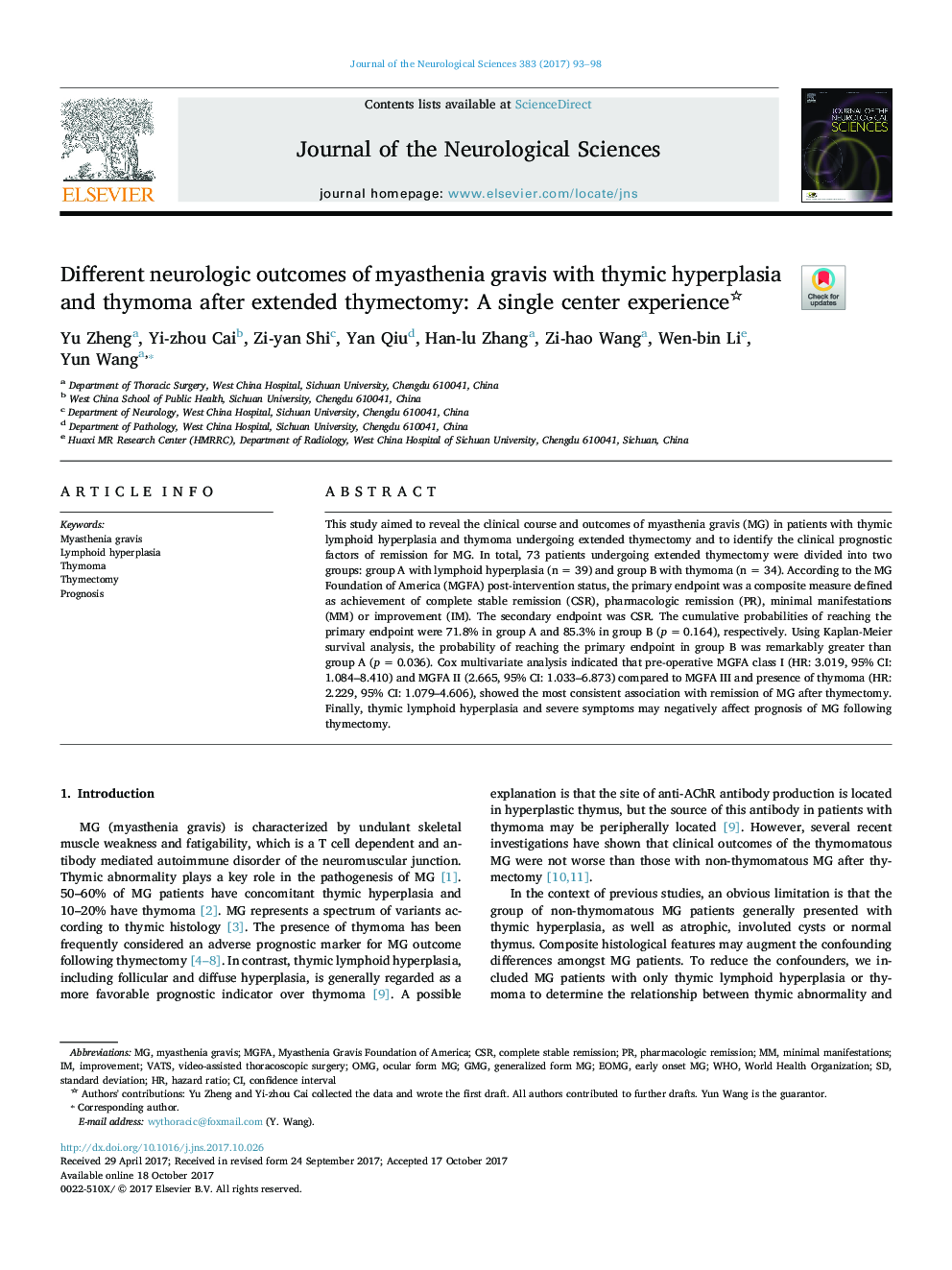| Article ID | Journal | Published Year | Pages | File Type |
|---|---|---|---|---|
| 8273162 | Journal of the Neurological Sciences | 2017 | 6 Pages |
Abstract
This study aimed to reveal the clinical course and outcomes of myasthenia gravis (MG) in patients with thymic lymphoid hyperplasia and thymoma undergoing extended thymectomy and to identify the clinical prognostic factors of remission for MG. In total, 73 patients undergoing extended thymectomy were divided into two groups: group A with lymphoid hyperplasia (n = 39) and group B with thymoma (n = 34). According to the MG Foundation of America (MGFA) post-intervention status, the primary endpoint was a composite measure defined as achievement of complete stable remission (CSR), pharmacologic remission (PR), minimal manifestations (MM) or improvement (IM). The secondary endpoint was CSR. The cumulative probabilities of reaching the primary endpoint were 71.8% in group A and 85.3% in group B (p = 0.164), respectively. Using Kaplan-Meier survival analysis, the probability of reaching the primary endpoint in group B was remarkably greater than group A (p = 0.036). Cox multivariate analysis indicated that pre-operative MGFA class I (HR: 3.019, 95% CI: 1.084-8.410) and MGFA II (2.665, 95% CI: 1.033-6.873) compared to MGFA III and presence of thymoma (HR: 2.229, 95% CI: 1.079-4.606), showed the most consistent association with remission of MG after thymectomy. Finally, thymic lymphoid hyperplasia and severe symptoms may negatively affect prognosis of MG following thymectomy.
Keywords
Related Topics
Life Sciences
Biochemistry, Genetics and Molecular Biology
Ageing
Authors
Yu Zheng, Yi-zhou Cai, Zi-yan Shi, Yan Qiu, Han-lu Zhang, Zi-hao Wang, Wen-bin Li, Yun Wang,
